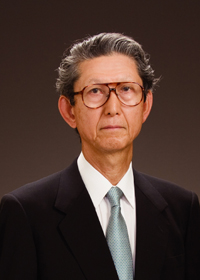
 President Atsuyuki Suzuki |
Japan Atomic Energy Agency (JAEA) implements a wide range of research and development, from our main expertise in nuclear energy and its uses to the more foundational development and creation of scientific and industrial technologies, in its role as the sole comprehensive R&D institute for nuclear energy in Japan. As we mark the 7th year of our establishment, we also approach the halfway point of the second mid-term plan.
On March 11th of this year, an unprecedented nuclear crisis occurred at the Tokyo Electric Power Company, Incorporated Fukushima Daiichi Nuclear Power Station. Immediately after the accident, the JAEA began working on various fronts together with Government and related local authorities to grasp the reality of the situation and help bring it under control.
This included dispatching specialists to the Nuclear Safety Commission of Japan, among others, to provide technical advice and scientific expertise as well as to conduct environmental radiation monitoring and analysis under the instruction of Japan’s Ministry of Education, Culture, Sports, Science, and Technology (MEXT). Furthermore, in order to enhance processes such as on-the-spot environmental monitoring and decontamination technology verification and to strengthen cooperation with the appropriate prefectural authorities, a framework was constructed with the president of the JAEA serving as chief of headquarters for a base of operations established inside of Fukushima Prefecture. In the future, in addition to participating in undertakings such as decontamination, which are directed at swiftly restoring environmental conditions, we would like to proactively aid in the development of the infrastructure and technologies necessary to bring crises to a close, including the safe management of hazardous fuel and contaminated matter.
Such is the case with one of our four core operations, the “MONJU” fast breeder reactor. In addition to reevaluating the effects of external power supply loss caused by the tsunami during the accident at Fukushima, we are reassessing our safety measures while steadily proceeding with regularly scheduled work, including restoring relay equipment in the reactor core and repairing the reactor ducts. Also, although quite a few our important facilities were damaged, albeit nothing to do with nuclear safety, by the March 11th earthquake, we are working diligently to complete plans for our other three core operations. These include the R&D of quantum beam applied technologies, using the Japan Proton Accelerator Research Complex (J-PARC), for instance, the R&D of fusion energy technologies based on the International Thermonuclear Experimental Reactor (ITER) and the Broader Approach (BA) activities, and technological development regarding the geological repository of high-level radioactive wastes. Despite tight budget constraints, we are also steadily going forward with the decommissioning of our own nuclear facilities and with the planning and implementation of underground disposal programs for radioactive waste arising from Japanese research facilities.
We believe it is important to proactively share and utilize the achievements of this organization’s R&D.
This publication constitutes a review of our achievements in the fiscal year 2010. It provides you with a look at some of the work that has been carried out, and also invites you to check the references listed and contact the researchers if there are any topics that you wish to learn more about. I would be most gratified if I could hear from you with any comments on this publication.
I hope that you enjoy this publication. Thank you for your interest.
Next: About This Publication and the Outline of Organization of JAEA>